The Castilla y León Regional Government awarded the LIFE actions to upgrade and expand the yew tree habitat located at Leon Central Mountains
24-07-2019
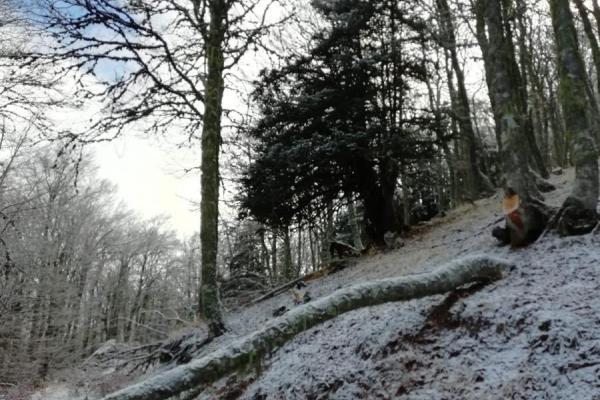
The Castilla y Leon Regional Government has just awarded a public contract to Eural to carry out ‛the upgrading and protection Actions in the Framework of the LIFE 15 NAT/ES/790 for the preservation and restoration of the Mediterranean Forests of Taxus baccata (9580*) located at the Cantabrian Mountains of the Leon Province Central Mountains ’ for the amount of €29,144.06. 8-month completion time (from 2019-2020) is established.
These works will upgrade and expand the yew tree-related habitat found in this Special Preservation Area (SPA) of the Leon Mountain Range by attaining the following aims:
These works will upgrade and expand the yew tree-related habitat found in this Special Preservation Area (SPA) of the Leon Mountain Range by attaining the following aims:
| Regulate the occasional space competition by beech trees (Fagus sylvatica) on the existing yew tree feet by removing these species codominant and/or dominant feet that prevent light from reaching the canopy lower stratum. |
| Make a gradual canopy opening to enable the installation of non-target species for plant formation diversity. |
| Increase the space for the yew tree habitat (9580*) of community interest (HCI) by planting the seedlings of these habitat typical catalogued species. |
| Restrict the herbivores’ access to enhance the yew tree natural regeneration. |
| Strengthen the existing yew tree populations by planting new feet. |
| Protect the HCI from threats such as forest fires by adjusting fuel loads in the stand perimeter. |
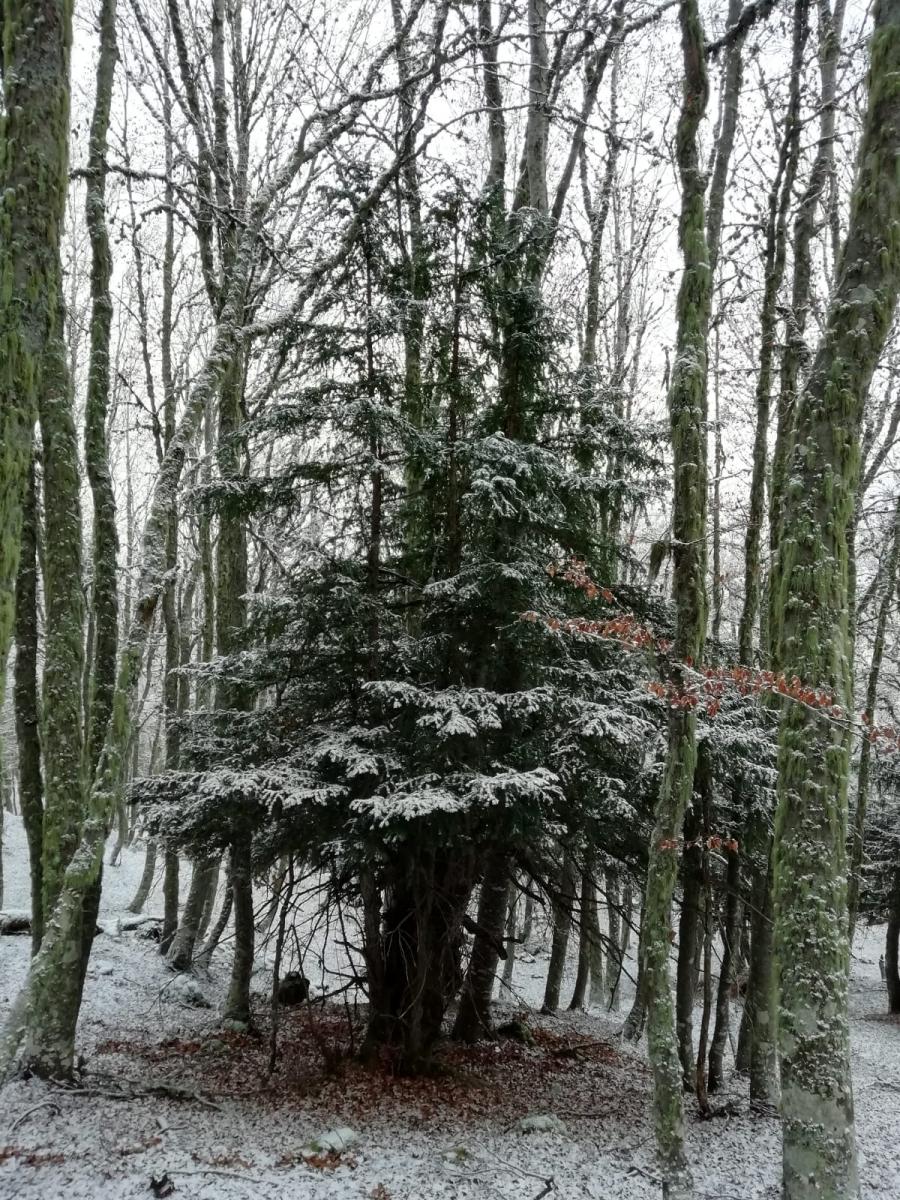 The characterization study of the ‛Mediterranean Forests of Taxus baccata (9580*) in the Cantabrian Mountains of Castilla y León ’ CIH helped to realize how important it is to take action in this area. According to this study, the SPA in the Central Mountain Range of Leon, at the shady Mediodía Mountain Range and Bodón Beech Forests, as well as the surrounding massifs, hold a great potential for the recovery of this habitat, despite the sturdy competition made by beech trees and the herbivory.
The characterization study of the ‛Mediterranean Forests of Taxus baccata (9580*) in the Cantabrian Mountains of Castilla y León ’ CIH helped to realize how important it is to take action in this area. According to this study, the SPA in the Central Mountain Range of Leon, at the shady Mediodía Mountain Range and Bodón Beech Forests, as well as the surrounding massifs, hold a great potential for the recovery of this habitat, despite the sturdy competition made by beech trees and the herbivory.Yew with no light released.
The so-called Bodón stand stands out at the heart of this SPA. It is included in the Public Use Woodland # 641 known as ‛La Cota y Bodón’ and it belongs to the minor local entity of Pontedo, at the Cármenes municipality. The stand is used as a bridge to connect eastern and western towns scattered over this province’s mountain chain. For this reason, it was decided to implement a great deal of these preservation actions in this site.
Aimed at attaining the above objectives, the following actions will be implemented:
Silvicultural Systems
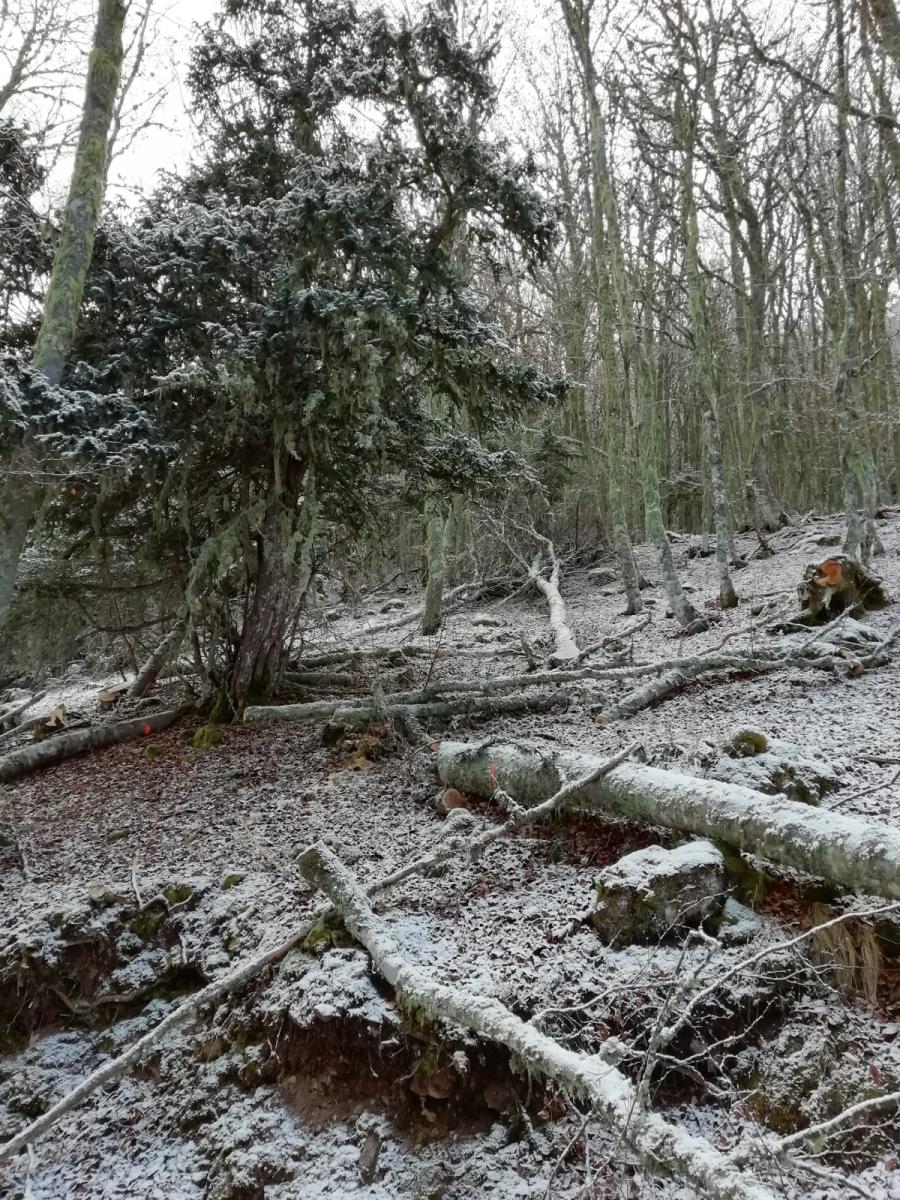 Initial overall thinning will be only applied to beech trees in 16.86 ha of the stand so that more light reaches the lower strata of the tree canopy. The removal of non-thriving shoots, dead trees and/or those with spotted signs of diseases as well as dominant feet will be carried out until the target thickness is achieved. In order to foster ecological niches, any larger dead feet or feet with cavities found in the way will be preserved hence they are shelters and source of biodiversity.
Initial overall thinning will be only applied to beech trees in 16.86 ha of the stand so that more light reaches the lower strata of the tree canopy. The removal of non-thriving shoots, dead trees and/or those with spotted signs of diseases as well as dominant feet will be carried out until the target thickness is achieved. In order to foster ecological niches, any larger dead feet or feet with cavities found in the way will be preserved hence they are shelters and source of biodiversity.Occasional mixed thinning
Then, for the yew tree feet a canopy opening will be more specifically applied. This will involve removing those larger beech feet that are competing in excess. As a result, a sufficiently thick matrix with enough canopy cover and internal gaps that are big enough to uphold feasibility of the lower strata will be achieved throughout the stand.
Finally, the residues resulting from this process will be cut up and spread across the soil to protect the regeneration.
Reforestations
Two types of reforestations are being considered: Connectivity reforestation in the stand surrounding area and enrichment reforestation in the inner area.
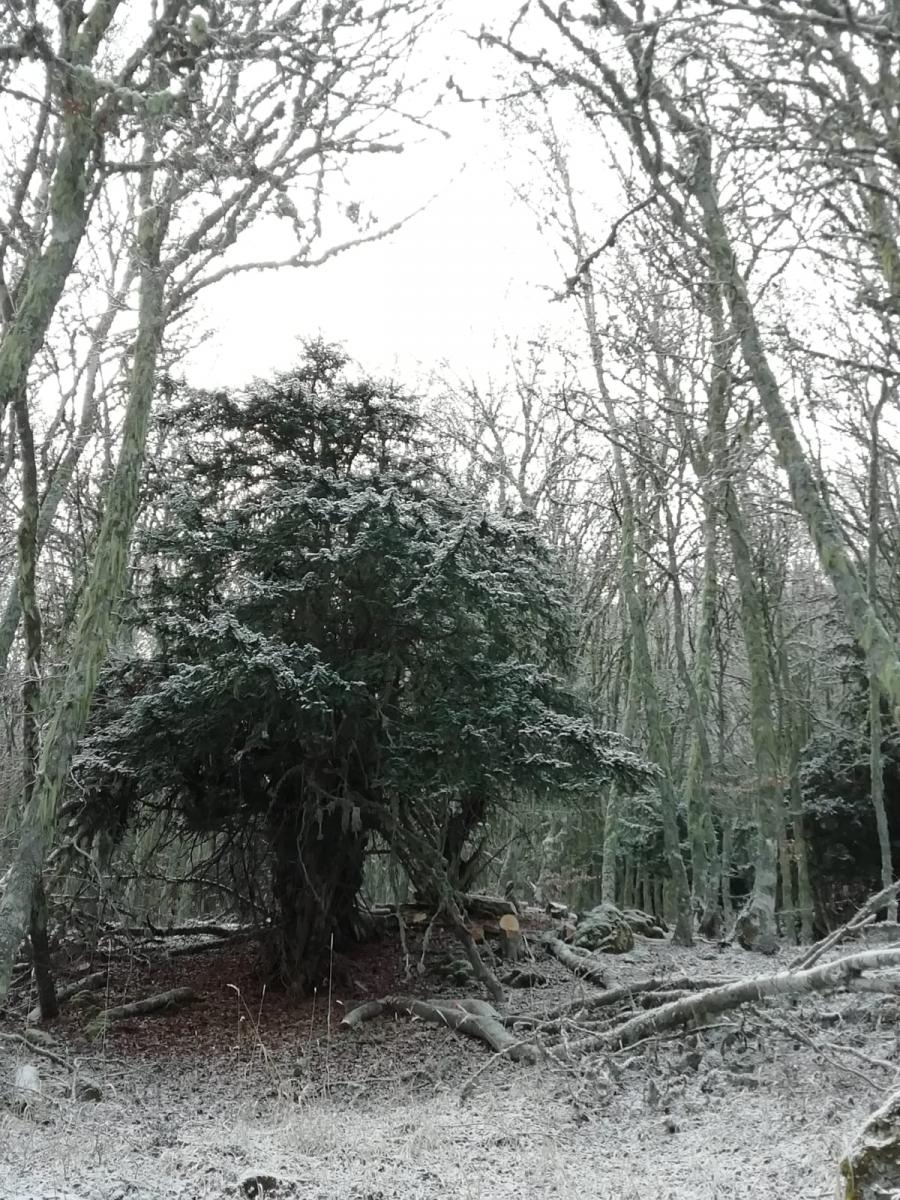 The connectivity reforestation will take place on 6.71 ha with a thickness of 1,100 feet/ha (3x3 m planting distance). This will allow yew trees and other catalogued species to grow in the opposite direction to the stand which will enable their connection with other neighboring stands. A specific combination of yew trees (Taxus baccata), Cantabria Scots pines (Pinus sylvestris), downy birch trees (Betula pubescens), rowan trees (Sorbus aucuparia), blackthorns (Prunus spinosa) and hazelnut trees (Corylus avellana) will be planted.
The connectivity reforestation will take place on 6.71 ha with a thickness of 1,100 feet/ha (3x3 m planting distance). This will allow yew trees and other catalogued species to grow in the opposite direction to the stand which will enable their connection with other neighboring stands. A specific combination of yew trees (Taxus baccata), Cantabria Scots pines (Pinus sylvestris), downy birch trees (Betula pubescens), rowan trees (Sorbus aucuparia), blackthorns (Prunus spinosa) and hazelnut trees (Corylus avellana) will be planted.Occasional mixed thinning
The enrichment reforestation will take place on 0.09 ha although with a thickness that goes up to 1,600 feet/ha. This will feature homogeneous tree masses and very low floristic diversity. In this case, the combination of species will consist of yew trees, downy birch trees and rowan trees.
Seedlings come from the central nursery in Valladolid with a certificate of origin. Regarding the yew trees, some healing in was experienced in Leon based on forest regeneration and additionally direct translocations will apply. This last technique was already tested in the Pagoeta setting, in the framework of the LIFE Project and now it will be used in this Leon area.
Fencing:
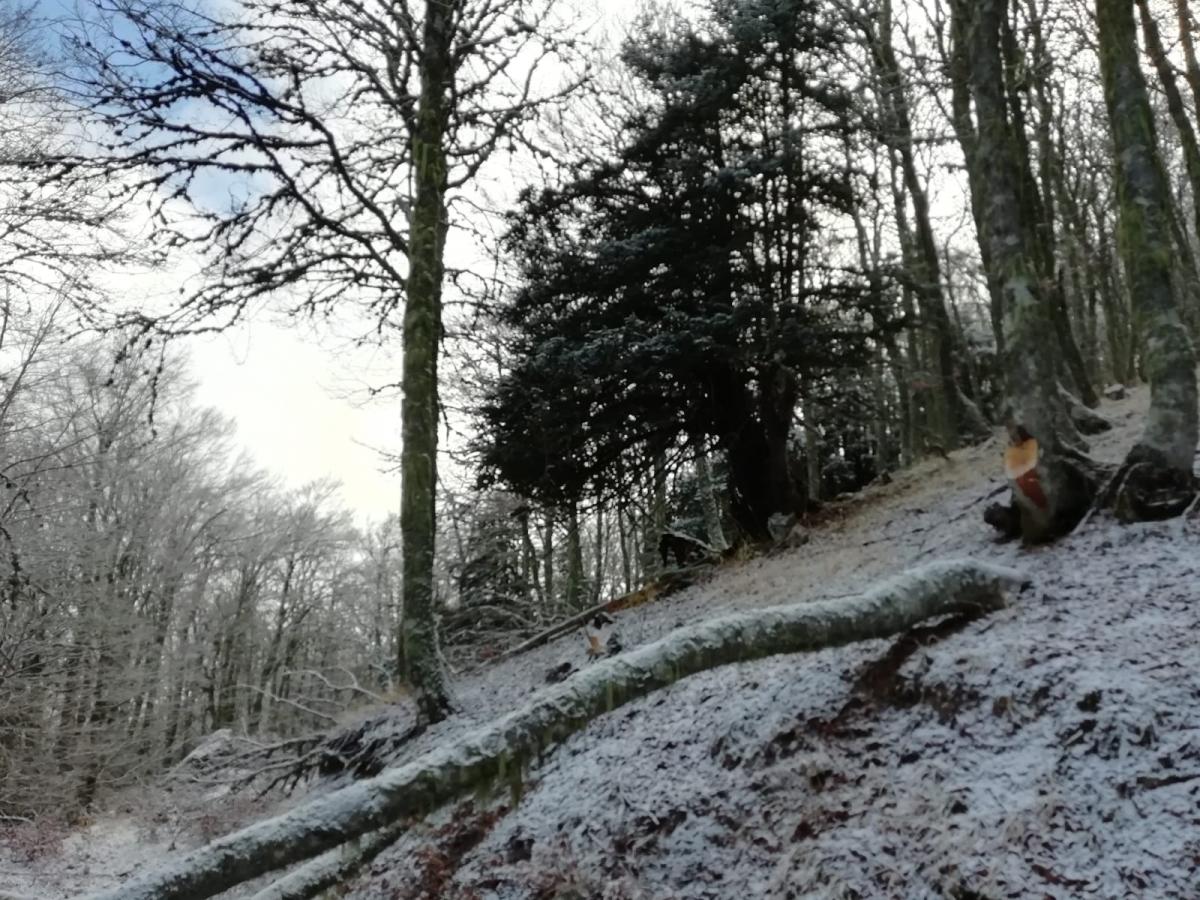 Considering yew tree regeneration is at risk due to the herbivory, a reduced area will be fenced with a hunting mesh to protect seedlings from household animals and wildlife.
Considering yew tree regeneration is at risk due to the herbivory, a reduced area will be fenced with a hunting mesh to protect seedlings from household animals and wildlife.Codominant tree removal
Defense against threats
A 20-m security strip will be established in some strips surrounding the tree-lined stand. De-brushing will take place to remove pyrophyte species (Erica, Cytisus, Genista, Rubus, Rosa and Chamaespartium) although the existing tree species will be kept.
Additionally, the edges of those tracks that cross the stand and its surroundings will be also de-brushed with manual and mechanical means although no tractors or any other type of machinery that may widen the original pattern or disturb the hardcore structural condition will be used.



